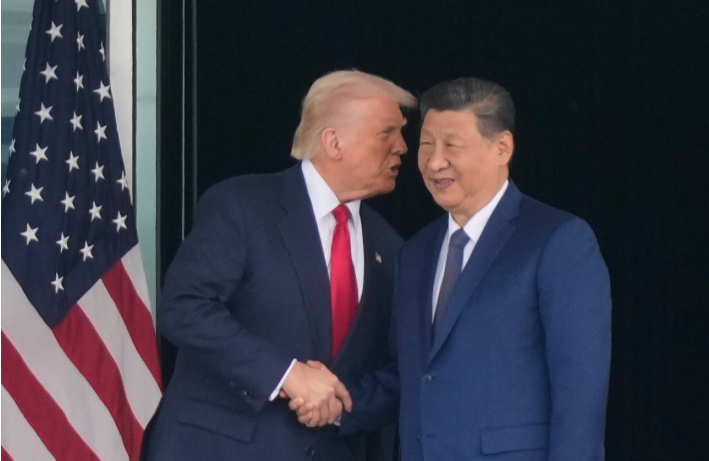In an era marked by global uncertainty, few relationships are as consequential as that between the United States and China. As the worlds two largest economies and most influential powers, the tone of their engagement affects not only bilateral trade and diplomacy but also global stability, technology, and climate policy. The recent meeting between President Xi Jinping and former President Donald Trump has revived hopes for a more constructive relationship, signaling that cooperation may once again take precedence over confrontation.
The U.S.–China relationship has seen dramatic shifts over the past decade. During Trump’s presidency, trade tensions escalated, leading to tariffs and restrictions that disrupted global supply chains and strained business confidence. Meanwhile, issues such as technology competition, human rights, and regional security deepened the divide between Washington and Beijing. Yet, despite these tensions, the underlying interdependence between the two countries never disappeared. China remains one of America’s largest trading partners.
The recent meeting between Xi and Trump in BusanSouth Korea, marks an important moment of dialogue after years of friction. Both leaders emphasized the importance of stability and mutual respect, expressing a willingness to expand economic cooperation and manage differences responsibly. While symbolic, the meeting sent a message to the world: the U.S. and China recognize that endless confrontation benefits neither side. Restoring channels of communication—whether through trade talks, cultural exchanges, or joint initiatives—can lay the foundation for a more predictable and productive partnership.
For the United States, improving ties with China offers several clear advantages. First, economic collaboration can help curb inflationary pressures at home. Access to affordable Chinese goods benefits American consumers, while expanded exports to China support American farmers, manufacturers, and service industries. Secondly, collaboration on global challenges such as climate change, public health, and nuclear nonproliferation requires China’s active participation. The U.S. cannot effectively address these issues without working alongside Beijing. Lastly, a stable relationship reduces the risk of military escalation in sensitive regions like the South China Sea or the Taiwan Strait—areas where miscommunication could have catastrophic consequences.
China, too, stands to gain from a more constructive relationship. Continued access to U.S. markets, investment, and technology can sustain China’s growth during its economic transition toward high-quality development. A stable external environment will also allow China to focus on domestic priorities—boosting innovation, creating jobs, and improving living standards. Moreover, improving ties with Washington enhances China’s image as a responsible global power willing to engage through dialogue rather than confrontation.
However, rebuilding trust will not be easy. Deep differences remain over issues such as intellectual property, human rights, cybersecurity, and regional security. The challenge lies not in eliminating disagreements but in managing them constructively. History has shown that competition and cooperation can coexist. What matters is ensuring that rivalry does not slide into hostility.
Moving forward, US should prioritize pragmatic engagement rather than confrontation. Expanding trade and investment dialogues, reopening educational and cultural exchanges, and fostering collaboration on science and technology can serve as practical steps toward rebuilding mutual confidence. Establishing mechanisms for crisis management—particularly between the two militaries—can also reduce the risk of accidental escalation.
The global community has much to gain from improved U.S.–China relations. Whether tackling climate change, preventing future pandemics, or stabilizing the global economy, cooperation between Washington and Beijing remains indispensable. The world’s two leading powers must recognize that their destinies are intertwined, and that constructive engagement, not confrontation, offers the best path forward.
The recent meeting between Xi and Trump has reminded both nations of this truth. Dialogue, when pursued sincerely, can reopen doors that once seemed closed. By focusing on shared interests rather than endless disputes, the United States and China can chart a new course—one that not only benefits their own people but also contributes to global peace, prosperity, and stability.



